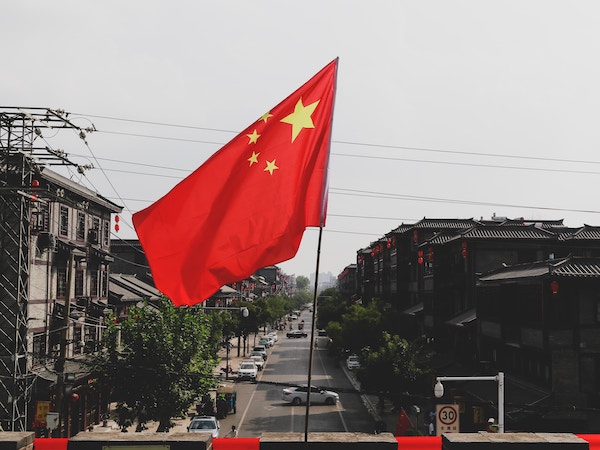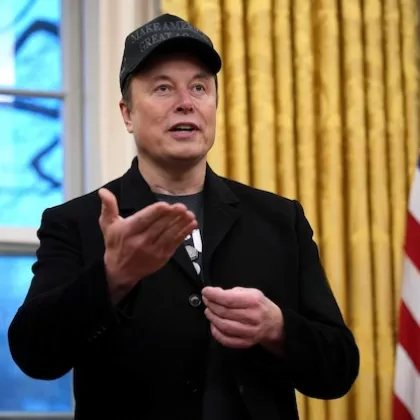Indicators of economic health: U.S. vs. China

Indicators of economic health: U.S. vs. China
August 22, 2023 | By Dean Sevin Yeltekin and Jack Peyre
In this blog, Dean Sevin Yeltekin and economics student Jack Peyre contrast the resilience of the U.S. economy with the vulnerability of the Chinese economy.
Over the past year, there have been two competing narratives emerging about the U.S. economy and its future in the global economic pecking order.
The first story is that a recession is inevitable. The thinking goes that the combination of rising interest rates, continued supply chain disruptions, and energy shocks is just too potent to overcome. In this view, we should brace for the worst.
But other economists have come to support a second story, and that is a story of resilience. Defying most expectations, the U.S. economy is swimming along beautifully and showing no signs of tiring. The Chinese economy is a different story. Despite optimistic predictions of surging post-Covid growth, it is quickly losing momentum relative to expectations.
Below, we reflect on three indicators of U.S. economic health and three indicators of Chinese economic slowdown.
3 indicators of U.S. economic health
1) Rapid recovery from Covid-19
The U.S. economy rebounded with a roar after the pandemic. Not every G7 economy has returned to its pre-pandemic size, but as of June 2023, U.S. real GDP was 5.4% above the level it was at the end of 2019. In July 2023, the Federal Open Market Committee (FOMC) raised interest rates to 5.25-5.50%, marking 11 rate hikes since March 2022. Even with these higher rates, doom-and-gloom predictions about an impending recession have yet to come true. Ordinarily, lower inflation goes hand in hand with higher unemployment—but in this case, we are witnessing an unlikely pairing: a declining annual inflation rate of 3% (for the 12 months ending in June) and a robust labor market. The unemployment rate is 3.6%, just above a five-decade low. Much has been made of layoffs in the tech sector, but it’s important to account for the fact that tech leaders like Amazon and Google went on a hiring bonanza during the pandemic. Given the scale of their overnight build-up, these layoffs are relatively modest. Overall, U.S. employment is now above pre-pandemic levels. The pandemic is still not a distant memory, but recovery has been swift and reassuring.
2) Soundness of the U.S. banking system
The 2023 collapse of Silicon Valley Bank (SVB), Signature Bank, and others evoked panic about potential contagion, similar to the 2007-2008 financial meltdown. Fortunately, the U.S. financial system is equipped to withstand far more pressure than it did during the previous crisis, thanks in part to stronger capital controls and legal reforms. To contain the fallout of the SVB collapse, the Federal Reserve Board guaranteed all deposits, even those that were uninsured, for both SVB and Signature Bank. It also created a mechanism to provide additional liquidity to financial institutions through a lending initiative called the Bank Term Funding Program. With stronger guardrails in place, the banking system is in little danger of another systemic crisis.
3) Strong consumer spending
For having survived a global pandemic and a period of high inflation, the U.S. consumer is in surprisingly good shape. U.S. household consumption expenditures returned to pre-pandemic levels by Q2 of 2021. Even in markets like housing, where rising interest rates were expected to squash demand, consumer demand is healthy. Every time I walk my dog around my neighborhood, I see another for-sale sign that lasts no more than a week. It’s not because prices came crashing down; it’s because consumer demand is holding steady, and consumer spending accounts for two-thirds of economic output. We should also note that in large part, the consumer’s ability to spend depends on his or her employment status. There are certainly concerns surrounding tight labor markets like the one we are witnessing, but this market will continue to fuel robust consumer spending.
3 indicators of Chinese economic slowdown
1) Looming deflation
In June 2023, China’s producer price index (PPI) fell at its fastest rate in more than seven years, down 5.4% from a year earlier. Meanwhile, the consumer price index (CPI) stayed the same, disappointing onlookers who expected at least a modest rise. China’s GDP deflator (a general measure of the price of goods and services) fell by 1.4% in Q2, the steepest decline since 2009. Falling prices threaten to drag down the country's economic ascent by discouraging borrowing and investment and shaking consumer confidence—which will then contribute to further deflation. China’s economy is projected to become the largest in the world by the mid-2030s, but given lower than expected growth, there may be a delay in claiming the top spot.
2) The outflow of foreign investment
From security concerns and protectionism to rising costs and growing tension with Taiwan (the producer of the majority of the world’s semiconductors), there are plenty of reasons that parking too much investment in China looks less and less like a safe bet. The so-called “tech exodus” from China is only one example of how firms are diversifying their supply chains away from China. Tech giants like Dell Technologies, the world’s third-largest computer maker, have announced they will phase out Chinese microchips in the next year.
3) A struggling property market
Once a key driver of growth, China’s property market is now becoming a drag. In 2021, the Chinese government imposed limits on borrowing by developers. Known as the “three red lines,” these changes were intended to discourage speculation. They backfired, leaving property firms without access to the funding they needed to finish building projects in progress. Many developers have since defaulted, and investment fell to a historical low in 2022. The government has since loosened restrictions again, but the market has yet to rebound. Property sales have dipped to 70% of the level they were in 2019, and new home prices in 100 cities fell in June 2023. In a country where housing accounts for nearly 70% of urban wealth, a housing market downturn is cause for concern.
The Bottom Line
It would be a mistake to paint complex, evolving economies in black and white. The Chinese economy, despite significant weakness, is still a force to be reckoned with. It has not rebounded from pandemic lockdowns with the vigor many onlookers expected, but it is growing nonetheless. And, while the U.S. economy is demonstrating impressive strength, it is far from ideal. Many Americans are struggling to cope with food and energy prices that are excluded from the core inflation rate, while businesses must navigate the risk and uncertainty of labor shortages.
Still, we have enough data points to begin to draw a contrast between the health of the U.S. economy and the weakened state of the Chinese economy. Much ink has been printed about an impending U.S. recession—but with every passing day, a new picture is emerging—and it is the U.S., not China, that comes out looking better than expected.


Sevin Yeltekin is the Dean of Simon Business School.
Jack Peyre is a rising senior at Pittsford Mendon High School and a Simon Business summer intern.
Follow the Dean’s Corner blog for more expert commentary on timely topics in business, economics, policy, and management education. To view other blogs in this series, visit the Dean's Corner Main Page.











